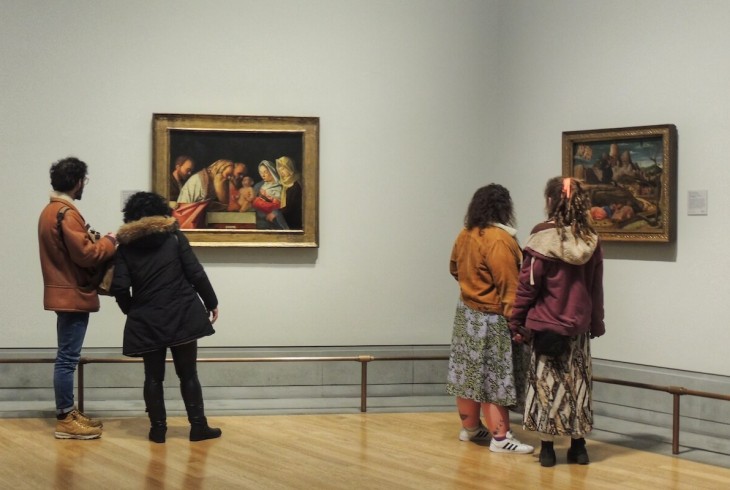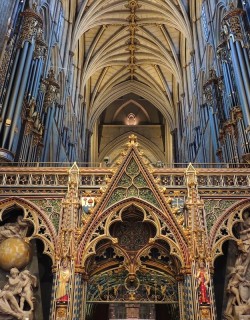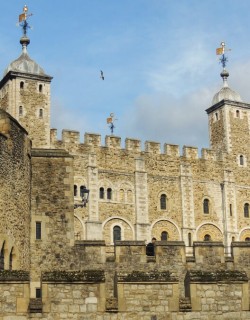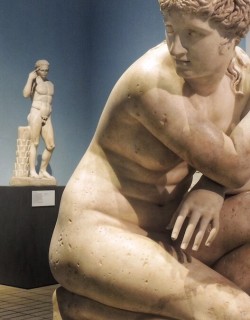With masterpieces spanning every era and genre of art from magical medieval altarpieces to the avant-garde 20th-century experiments of the post-impressionists, few museums in the world can match the artistic riches of London’s National Gallery. The venerable Trafalgar Square institution is particularly strong on Italian Renaissance painting, and boasts works from the hands of practically every major artist from the 15th and 16th centuries. This week on our blog we’re rounding up some of our favourites; although you could easily spend days in the National Gallery getting to grips with the Renaissance, from Leonardo to Michelangelo and Botticelli, we think these are a good starting point!
Leonardo da Vinci - The Virgin on the Rocks
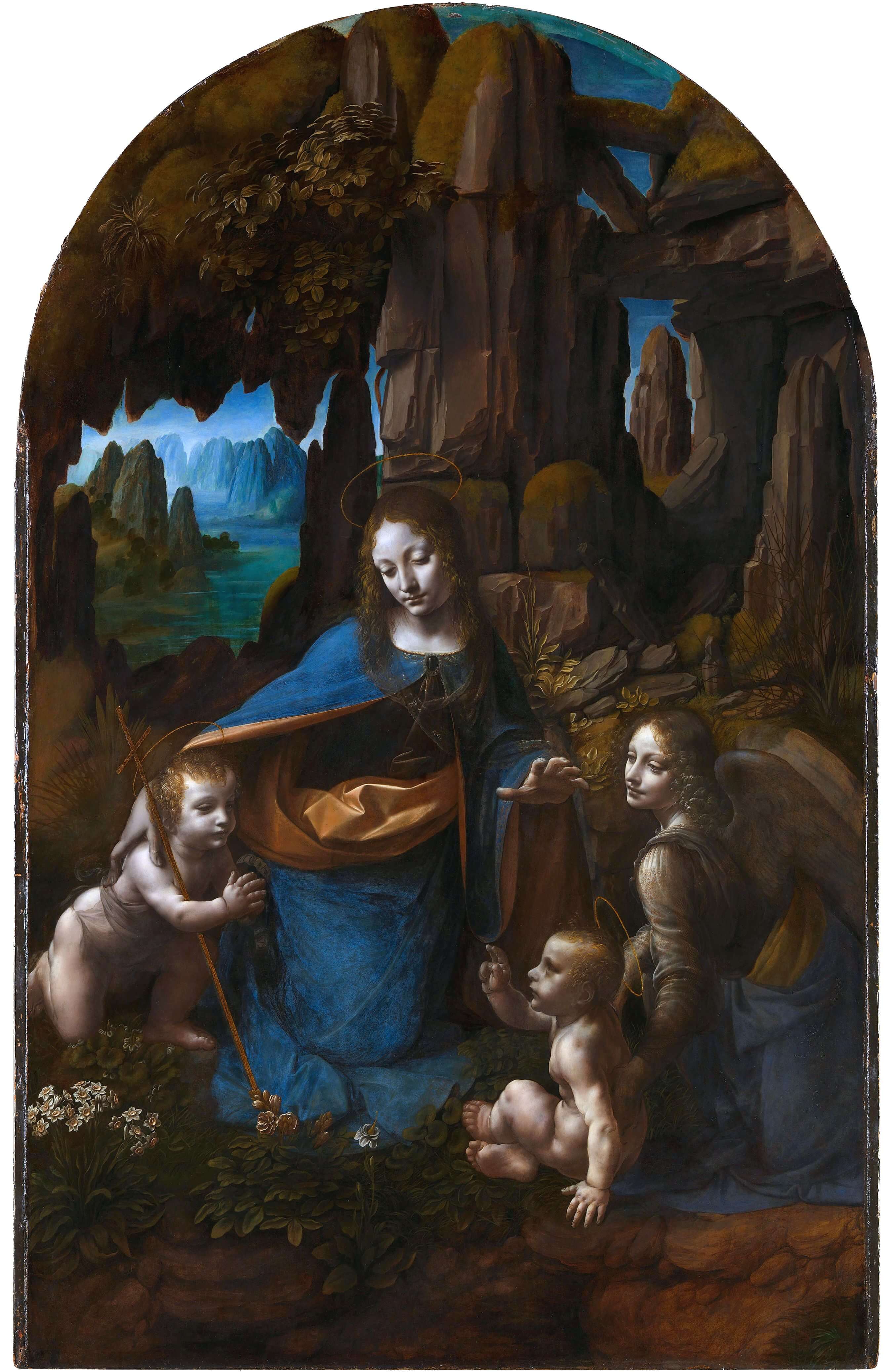
Leonardo da Vinci is for good reason considered to be the Renaissance man par excellence, equally at home in the arts as he was in the sciences, happily mixing technological innovation with deep learning and a profound humanist spirit. London’s National Gallery is fortunate to be in possession of one of the artist’s most famous works, and one of the few large paintings by Leonardo’s hand to have survived to the present day. This is the Virgin on the Rocks, one of two versions of the subject that the artist would paint (the other is now in the Louvre in Paris).
The panel was originally intended as part of an altarpiece for the Milanese church of San Francesco Grande, commissioned by a confraternity dedicated to the Immaculate Conception of the Virgin Mary. The composition features Mary surrounded by an infant Christ, John the Baptist and an angel, all apparently engaged in a profoundly spiritual but silent union: the baby Jesus raises his fingers in benediction as John the Baptist clasps his hands in awed prayer. Mary has one hand around the Baptist’s shoulder, whilst the other extends outwards from the picture plane in a virtuoso demonstration of perspective. The angel, meanwhile, captured in profile, is one of the most beautiful figures in all of art.
The tender, silent moment unfolds in a strange rocky landscape filled with minutely detailed plants, flowers and geological formations - evidence of the young Leonardo’s profound interest in the natural world. The landscape is suffused with a strange light that seems to make it extend infinitely backwards in space - this is thanks to the use of a technique known as aerial perspective, an innovation of Leonardo that would be widely adopted by Renaissance artists in the decades to come. Another revolutionary technique known as sfumato - in which colours are very gradually blended together to subtly blur contours - adds to the enigmatic nature of the scene.
Michelangelo - The Entombment, c.1501

Although widely regarded as the finest artist of his generation and perhaps any other, Michelangelo left behind very few panel paintings during his long career - only 3 can be securely attributed to the Renaissance master. This unfinished painting was originally intended for a funerary chapel in the church of Sant’Agostino in Rome, but lay abandoned when Michelangelo left the Eternal City for Florence in 1501.
With its insistent linear rhythms and flattening of 3-dimensional space, the daring composition seems to recall an ancient Roman frieze. The identities of the figures surrounding the central, lifeless body of Christ are difficult to ascertain with certainty; the androgynous figure on the left in a long orange cape is probably John the Evangelist, whilst the bearded old man behind Christ can be identified as either Joseph of Arimathea, who gave up his tomb so that Jesus could be buried there, or Nicodemus, who aided in his burial.
The three other female figures are probably the three Marys - Mary Magdalene, Mary Cleophas and Mary Salome, whilst the empty space on the panel’s bottom right was certainly reserved for the Virgin Mary herself. In its unfinished state it’s a disquieting, rather apocalyptic rendering of the events that will lead to Christ’s resurrection, and powerfully exemplifies Michelangelo’s sober religiosity.
Titian - Bacchus and Ariadne, 1520-23
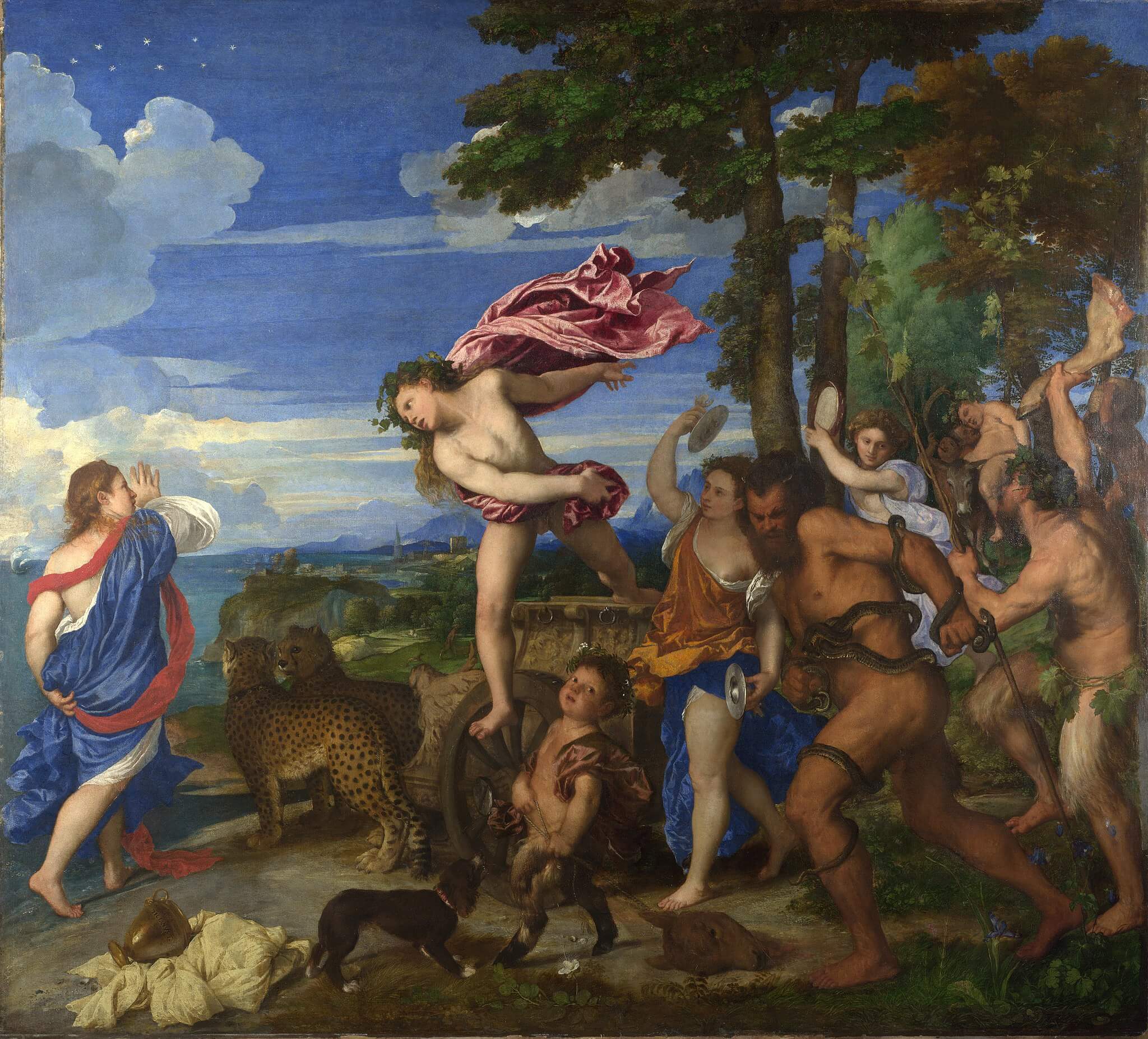
Dazzling colours and incredible light effects are distinctive hallmarks of the Venetian master Titian’s mature style, and they are in full evidence in this canvas painted for the Duke of Ferrara Alfonso I d'Este in 1523. The painting formed part of a series of mythological paintings that were to hang in the Duke’s palace, and portrays the sizzling first meeting between Bacchus, the god of wine, and the princess Ariadne.
The story goes that Ariadne, daughter of King Minos, helped Theseus, king of Athens, to escape from the Minotaur’s labyrinth on the island of Crete. The two quickly became a couple, but just as quickly flighty Theseus abandoned Ariadne to sail off on new adventures. The jilted princess isn’t alone for long, however; soon after she stumbles across a fabulous procession of revellers led by Bacchus, returning from distant India. Bacchus is immediately struck by Ariadne’s beauty, and leaps headlong from his cheetah-drawn chariot to introduce himself. It’s love at first sight. The vibrant composition seems to pulse with life, and captures Titian at the height of his powers.
Sandro Botticelli - Venus and Mars, c.1485
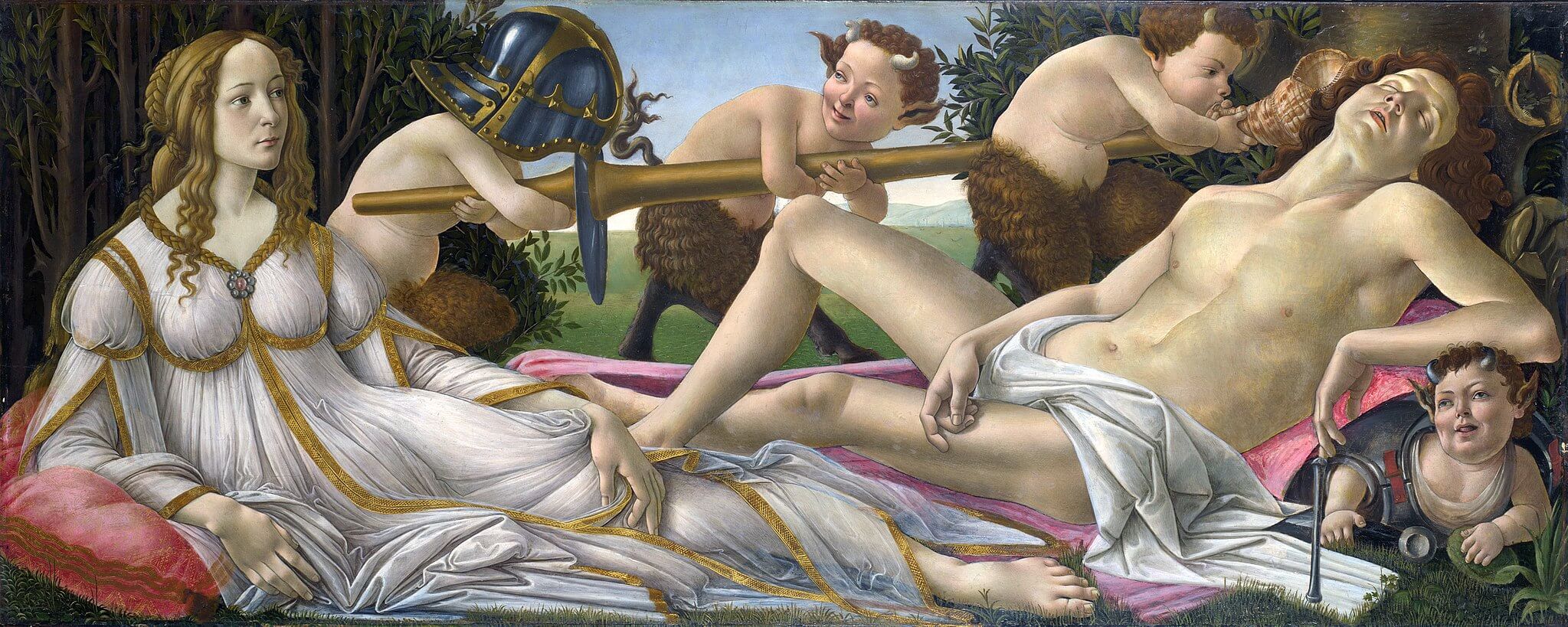
In this playful scene, the radiantly beautiful goddess of love looks across at her nearly nude and out-for-the-count lover Mars, the usually formidable god of war. Mars is so deeply lost in sleep that he is oblivious to the three little satyrs cavorting around him, one of whom blows a conch into his ear. Mars’ undignified demeanour contrasts strongly with Venus, who is elegantly composed in a fabulous, diaphanous white dress picked out in golden trim. It seems that the lovers have been portrayed just after an amorous tryst, and the subject matter is wholly appropriate to the function of this painting, which was almost certainly commissioned to celebrate the wedding of a prominent Florentine family.
The distinctive ‘wide-screen’ format of the panel indicates that this was either the decorative front to a cassone, a type of chest that a wife would bring with her to her new life after marriage, or a spalliera, a decorative panel set into the wall of a bedchamber. The erudite subject matter demonstrates the extent to which 15th-century artists and patrons were turning to the classical world as sources of inspiration, a key tenet of Renaissance humanism
Raphael - Portrait of Julius II
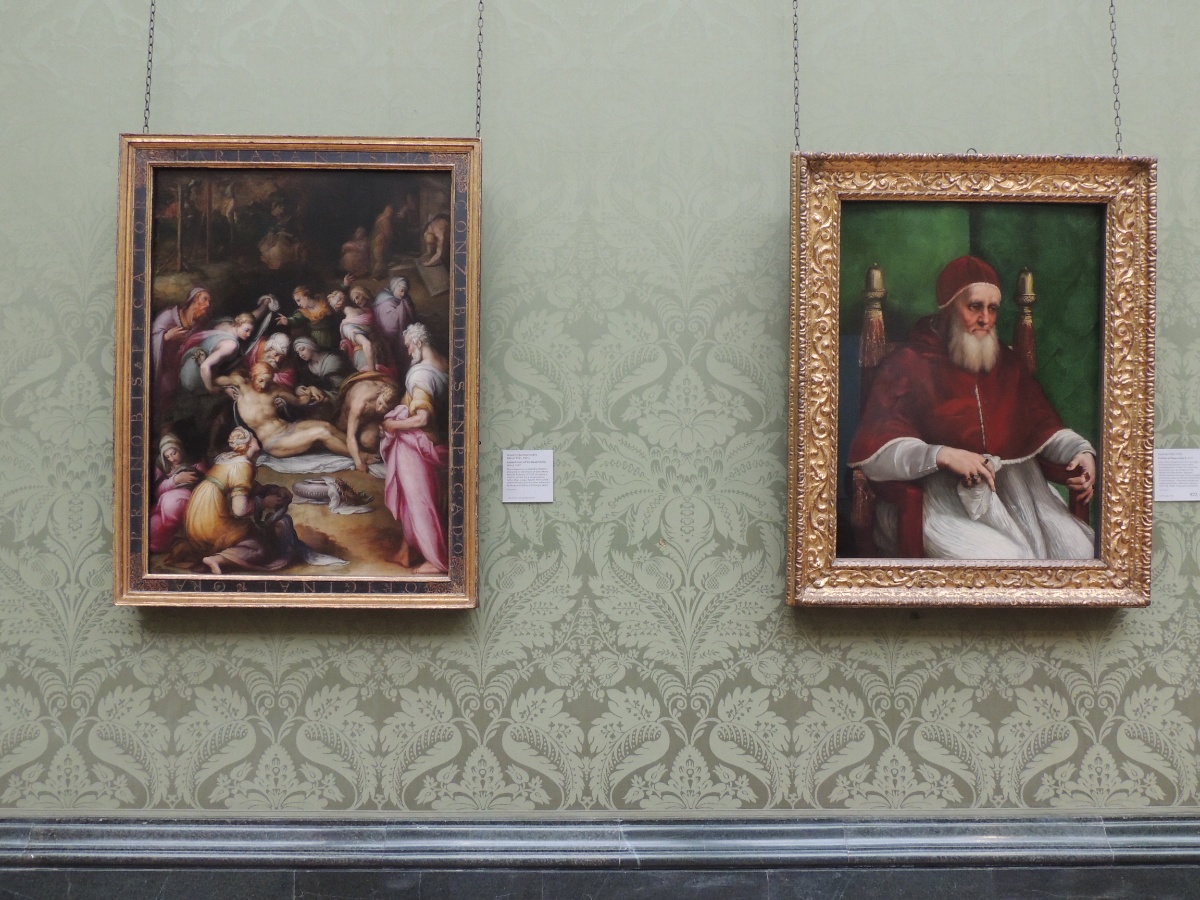
The third member of the so-called ‘big three’ of High Renaissance art, Raphael was one of the art world’s first true superstars. The artist’s popularity was almost universal during his lifetime; handsome and eloquent in equal measure, the man known as the Prince of Painters left a string of masterpieces in his wake across Rome and beyond before a mysterious illness cut him down in his prime at the age of 37 in 1520.
In this portrait of Pope Julius II, Raphael immortalises his greatest patron, and perhaps indeed the the most important commissioner of art in the Renaissance: in addition to employing Raphael to paint the Vatican Stanze, Pope Julius also prevailed upon Michelangelo to undertake the herculean task of decorating the Sistine Chapel ceiling, thus setting in motion one of the most productive eras of art the world had even seen. Raphael’s extraordinary talents of expression are on full show in the way he vividly brings the fearsome Pope to life across the centuries.
Julius’ long beard and downcast expression reflect that this portrait was painted during one of the most difficult periods of his papacy - after losing control of the city of Bologna in a humiliating reverse in 1510, the bellicose pontiff known as the “Warrior Pope” resolved to not shave again until the city was recaptured; it took nearly two years of hard graft. When Pope Julius II died in December 1513, Raphael’s iconic portrait was publicly displayed in the church of Santa Maria del Popolo where it predictably caused a sensation, ushering in a new standard for papal portraiture in the centuries to come. Look out for the golden acorns that adorn the sides of the Pope’s seat; Julius’ family name was della Rovere, Italian for the oak tree from which acorns spring.
Paolo Uccello - The Battle of San Romano
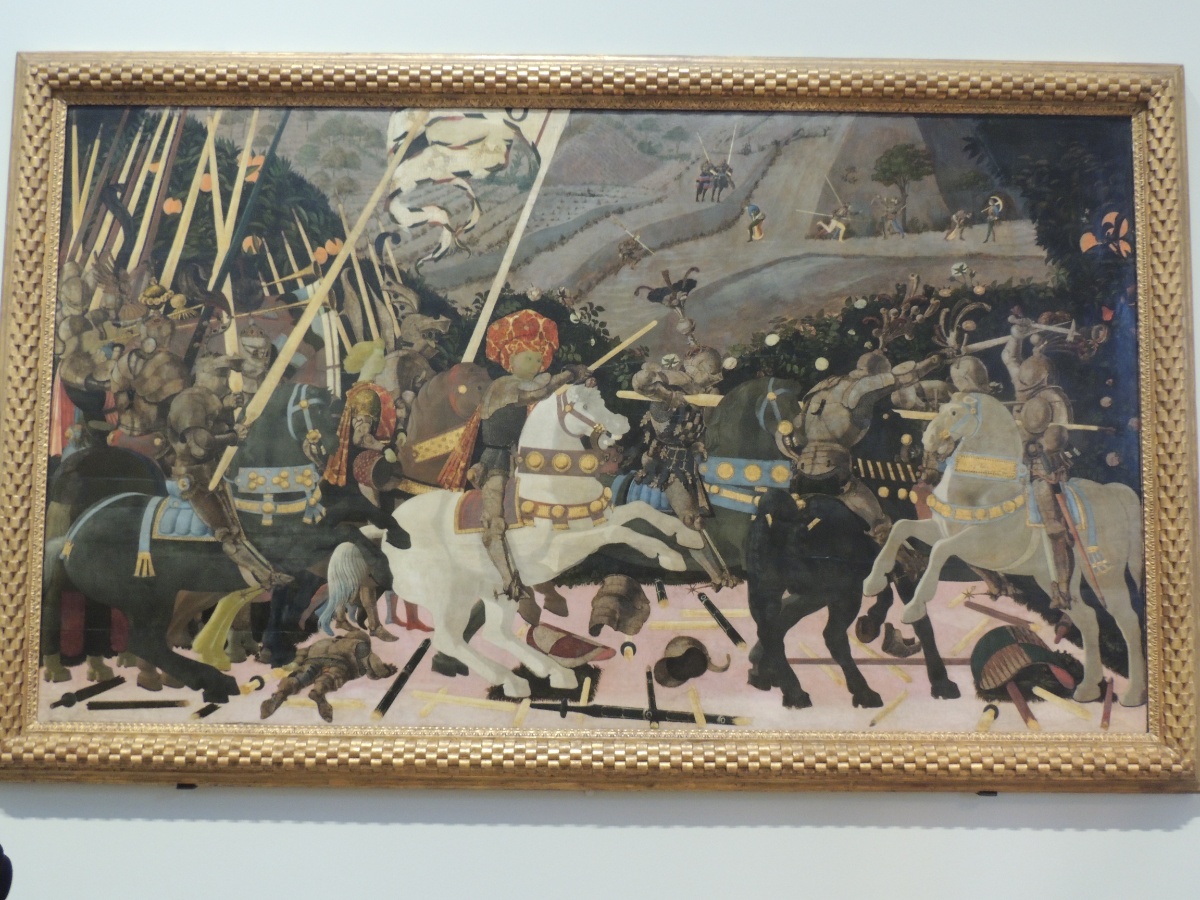
The dark and violent side of the Renaissance is vividly on display in this enormous panel depicting one of the Florentine Republic’s greatest military victories. The battle of San Romano took place in the 1430s, and saw Florence take control of the route to Pisa in a protracted military campaign against their various foes. At the centre of the action is the dashing condottiere, or soldier for hire, Nicola da Tolentino riding into battle on a white charger, adorned in a truly extraordinary red headdress. Nicola would lead his troops to victory and be hailed as a hero in Florence soon afterwards.
Known to contemporaries as a somewhat strange and melancholic figure, the artist responsible for this geometric tour de force was Paolo Uccello, an artist who cut his teeth with the goldsmith Lorenzo Ghiberti on the project for the doors of the Florentine Baptistery, and whose paintings all demonstrate a powerful sense of 3-dimensional space no doubt influenced by these early experiments in sculpture. Uccello was also an expert in mathematics, and his grasp of the new science of perspective marked him out as one of the foremost innovators of his generation.
Perspective is king in this battle scene; the lances of the knights riding into battle in their fabulous suits of armour and the broken weapons littering the foreground provide the structuring principle for the painting. In the background, oblivious peasants go about their daily tasks in fertile fields bordered with orange trees and flowering hedges, a vivid reminder that war was an almost mundane part of daily life for European citizens in the 15th century.
Public domain photos taken from wikimedia commons.
